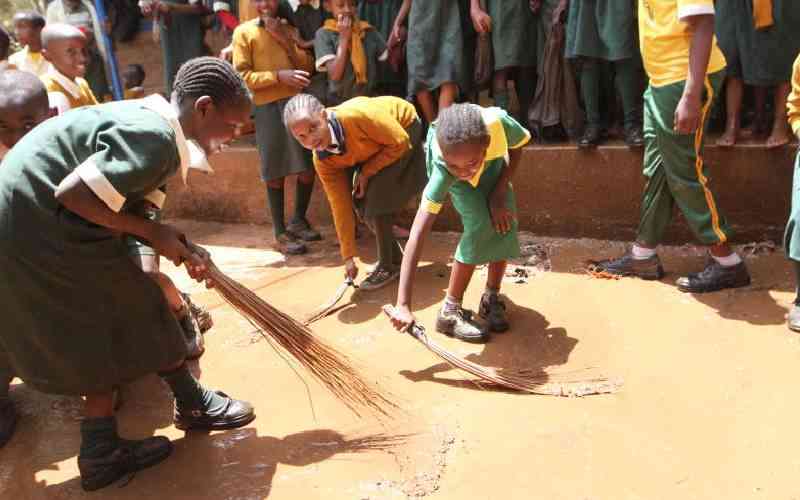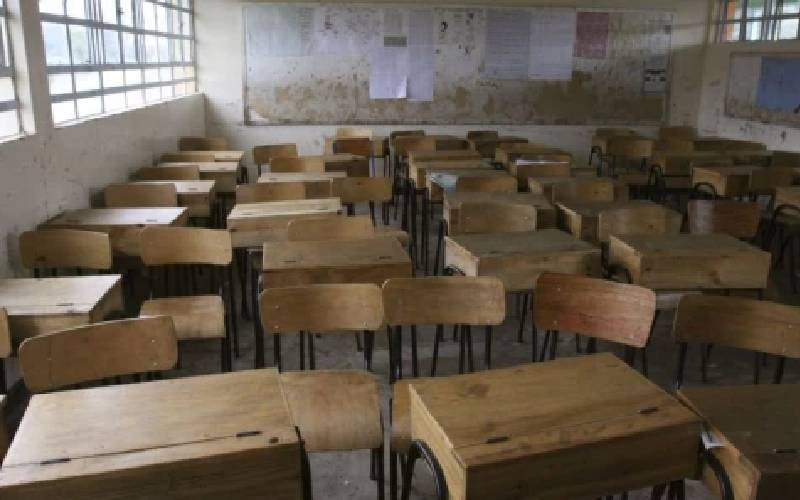
Kenya is one of the countries that have a competency-based curriculum (CBC). The journey to making CBC a reality started in 2017. Although the curriculum has faced challenges, it bodes well for the future of Kenya in relation to global projections and industrial growth. The seven core competencies in the curriculum speak to the real societal needs and how to respond to them.
CBC has brought new learning areas that were taught before. This means teachers must be trained in areas which they will teach. Additionally, training needs for the curriculum of both teacher training colleges and universities are yet to resonate with Prof Douglas Odhiambo’s report of 2012 on improving the quality and relevance of education, especially on the aspect of special needs education.
Very little has been mentioned concerning learners with disabilities in the new dispensation. Sessional paper No. 1 of 2019 on the rationale of its existence peaks to the need to ensure inclusive and equitable quality education and to promote lifelong learning opportunities for all in order to give every Kenyan the right to education and training as envisioned in the Constitution.
Chapter 4 of the sessional paper on enhancing access, equity, quality and relevance speaks to the need to increase access to education and training for learners with special needs, enhance enrollment, enhance retention, transition and completion, strengthen early identification, intervention, assessment, referral placement and follow up services as well as ensure opportunity and gender parity in the provision of education to learners with special needs.
The sessional paper further illustrates that government will provide quality and inclusive education and training to learners with special learning needs as well as strengthen assessment for early identification, placement and referrals. Although this policy framework on inclusive education exists, very little has been achieved as reported by the task force on Enhancing Access, Relevance, Transition, Equity and Quality for Effective Curriculum Reforms Implementation.
The only available estimates of enrollment of learners with disabilities indicate that there are 190,916 persons in Kenya aged between 5-22 years (Kenya National Bureau of Statistics, 2019) out of which 131,564 learners representing 68.9 per cent are enrolled in various learning institutions while 59,352 persons representing 31.1 per cent were not enrolled anywhere. The estimates also show that there is a 33.3, 59.0 and 5.0 per cent of institutions for disabled learners in pre-school, primary and secondary schools respectively which is far much low compared to the number of persons with various disabilities as reported by the Ministry of Education in 2020.
It is apparent that several years after disability needs were mainstreamed in the Constitution, persons with disabilities in Kenya still face discrimination in terms of planning, budgeting and establishment of environmentally-friendly schools to facilitate teaching and learning. Providing education to disabled persons is more costly than to ordinary persons. Yet, the budgetary allocation to learners with disabilities remains inadequate.
There must be concerted efforts to ensure that all persons with disabilities of school-going age are admitted to schools across the country. The same should be done to ensure retention, transition and completion. From the Ministry of Education's data, out of every 10 learners with special needs who joins school, only four are retained, three transit to the next level while one finishes the education cycle to their desired level. This is extremely worrying given that disability does not directly translate to inability.
The high dropout rate is caused by the cost of teaching and learning materials versus high poverty index among many affected households, ignorance, lack of exposure, cultural beliefs and the weak quality assurance and standards mechanisms over special needs education. Another cause could be lack of qualified teachers to handle the different disability areas.
All these causes were addressed in the Sessional Paper No. 1 of 2019 as policy, yet there is lack of will to implement this policy. When we mention subject areas in CBC, we need to ask ourselves how the new curriculum is addressing special needs education. For instance, Kenya Sign Language and Braille should not be optional subjects. It should be made mandatory to all learners.
Finally, infrastructure in public learning institutions such as accessible classrooms with ramps and desks for the disabled are lacking in schools. Toilets and pit latrines specially designed for persons with disability which were recommended by the disability policy are lacking in schools. This contributes heavily to keeping these learners away from school. The Education ministry should ensure that these basic facilities are available in schools. The same should apply to the Teachers Service Commission which should ensure that enough trained teachers are employed in the sector to meet international staffing standards.
 The Standard Group Plc is a
multi-media organization with investments in media platforms spanning newspaper
print operations, television, radio broadcasting, digital and online services. The
Standard Group is recognized as a leading multi-media house in Kenya with a key
influence in matters of national and international interest.
The Standard Group Plc is a
multi-media organization with investments in media platforms spanning newspaper
print operations, television, radio broadcasting, digital and online services. The
Standard Group is recognized as a leading multi-media house in Kenya with a key
influence in matters of national and international interest.
 The Standard Group Plc is a
multi-media organization with investments in media platforms spanning newspaper
print operations, television, radio broadcasting, digital and online services. The
Standard Group is recognized as a leading multi-media house in Kenya with a key
influence in matters of national and international interest.
The Standard Group Plc is a
multi-media organization with investments in media platforms spanning newspaper
print operations, television, radio broadcasting, digital and online services. The
Standard Group is recognized as a leading multi-media house in Kenya with a key
influence in matters of national and international interest.









